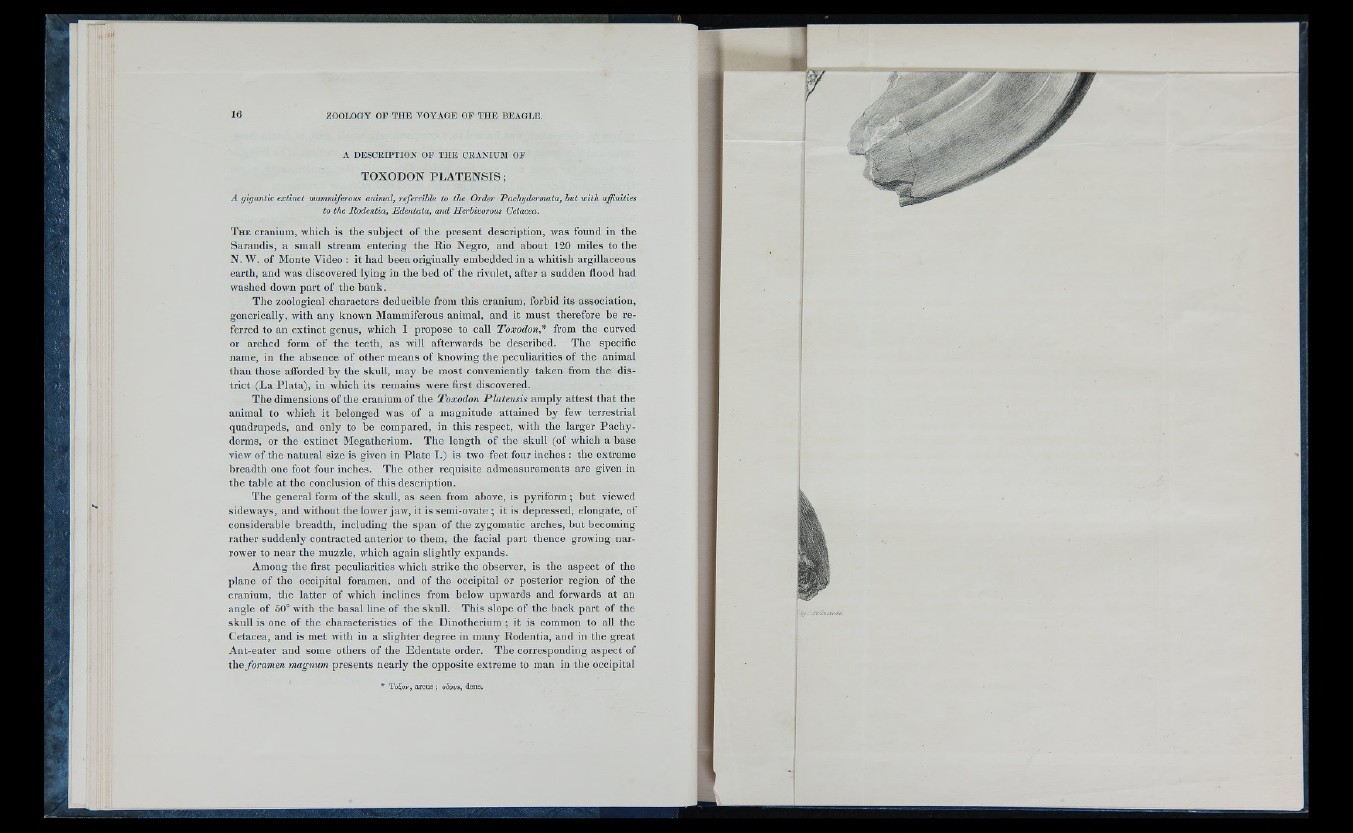
A DESCRIPTION OF THE CRANIUM OF
TO XO DO N P L A T E N S IS ;
A gigantic extinct mammiferous animal, referrible to the Order Pachydermata, but with affinities
to the Rodentia, Edentata, and Herbivorous Cetacea.
T h e cranium, which is the subject o f the present description, was found in the
Sarandis, a small stream entering the Rio Negro, and about 120 miles to the
N. W. o f Monte Video : it had been originally embedded in a whitish argillaceous
earth, and was discovered lying in the bed o f the rivulet, after a sudden flood had
washed down part o f the bank.
The zoological characters deducible from this cranium, forbid its association,
generically, with any known Mammiferous animal, and it must therefore be referred
to an extinct genus, which I propose to call Toxodon,* from the cmwed
or arched form o f the teeth, as will afterwards be described. The specific
name, in the absence o f other means o f knowing the peculiarities o f the animal
than those afforded b y the skull, may be most conveniently taken from the district
(La Plata), in which its remains were first discovered.
The dimensions o f the cranium of the Toxodon Pla tensis amply attest that the
animal to which it belonged was o f a magnitude attained by few terrestrial
quadrupeds, and only to be compared, in this respect, with the larger Pa chy derms,
or the extinct Megatherium. The length o f the skull (of which a base
view o f the natural size is given in P la te I.) is two feet four inches : the extreme
breadth one foot four inches. The other requisite admeasurements are given in
the table at the conclusion o f this description.
The general form o f the skull, as seen from above, is pyriform ; but viewed
sideways, and without the lower jaw, it is semi-ovate ; it is depressed, elongate, of
considerable breadth, including the span o f the zygomatic arches, but becoming
rather suddenly contracted anterior to them, the facial part thence growing narrower
to near the muzzle, which again slightly expands.
Among the first peculiarities which strike the obseiwer, is the aspect o f the
plane o f the occipital foramen, and o f the occipital or posterior region of the
cranium, the latter of which inclines from below upwards and forwards at an
angle o f 50° with the basal line of the skull. This slope o f the back part o f the
skull is one o f the characteristics o f the Dinothérium ; it is common to all the
Cetacea, and is met with in a slighter degree in many Rodentia, and in the great
Ant-eater and some others o f the Edentate order. The corresponding aspect of
the foramen magnum presents nearly the opposite extreme to man in the occipital
* To^oy, arcus ; oiovs, dens.